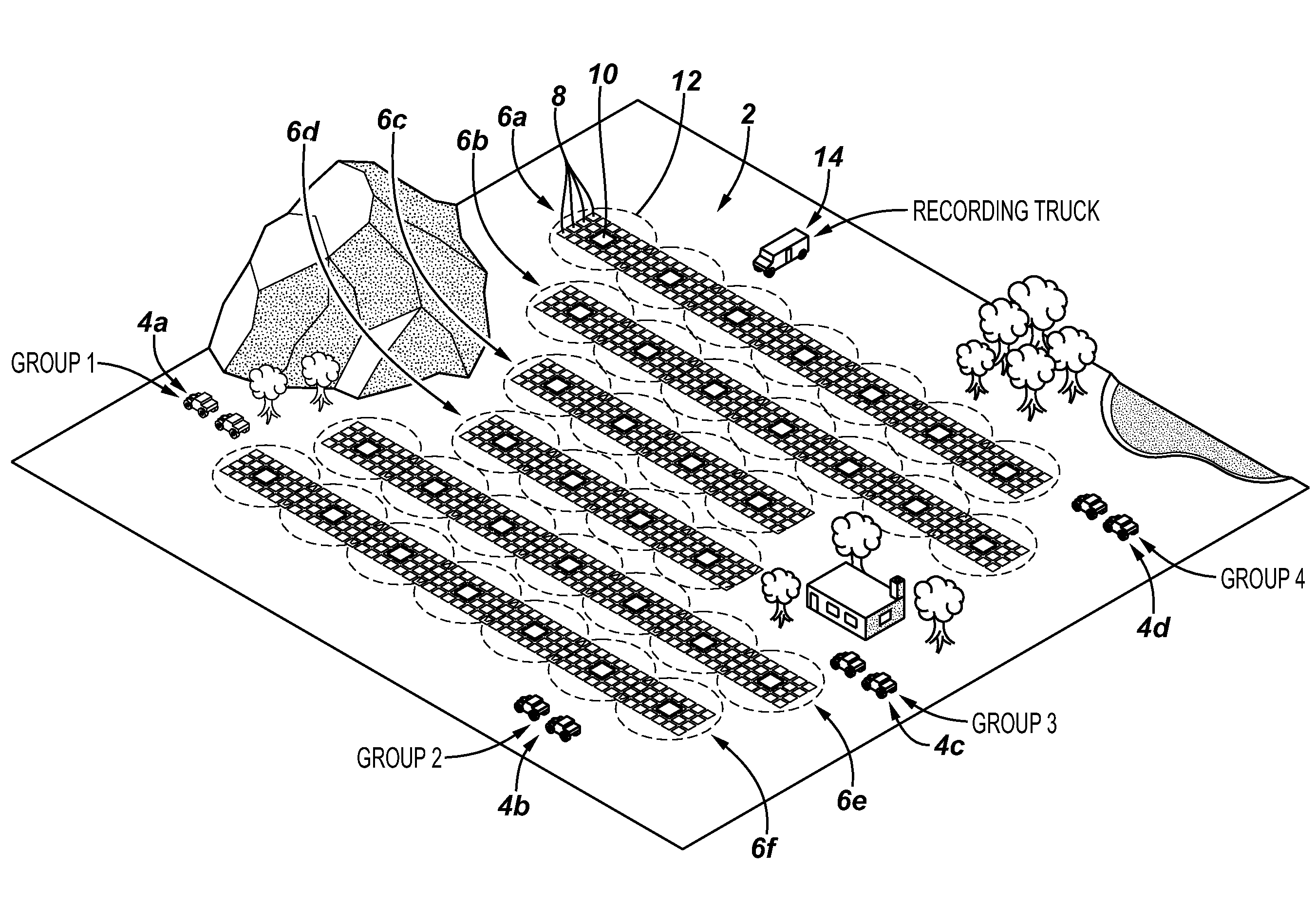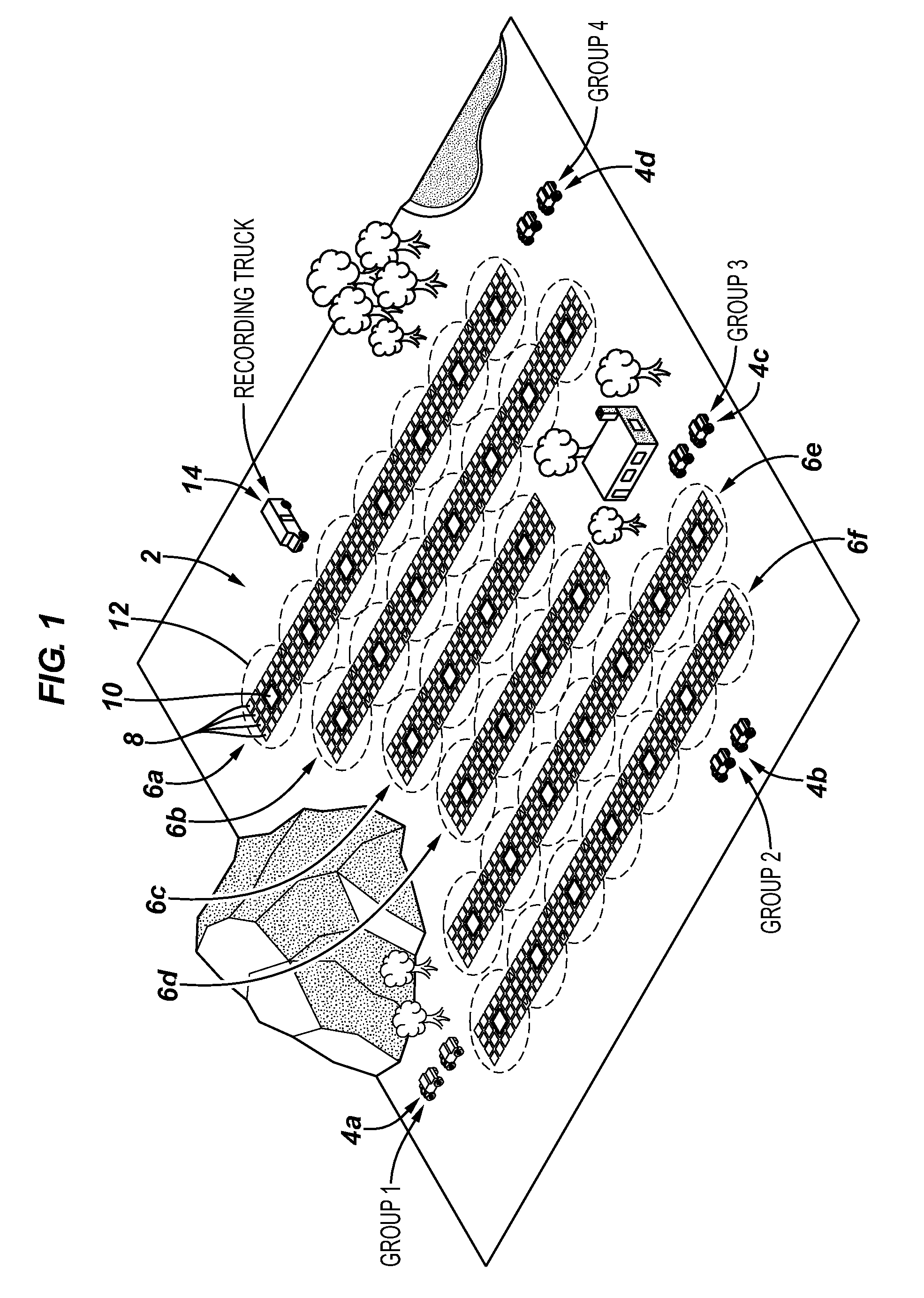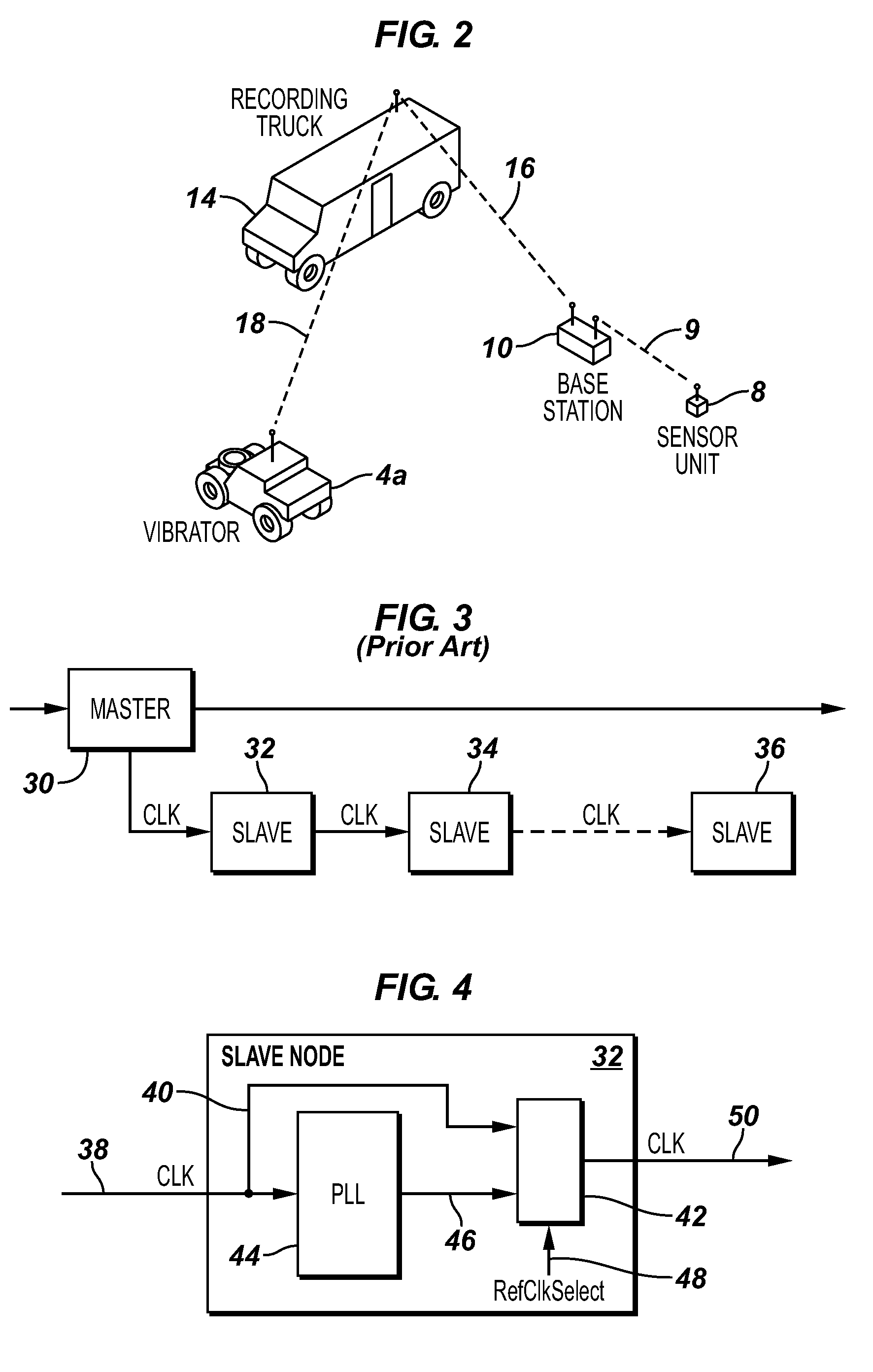Systems and Methods for Seismic Data Acquisition Employing Clock Source Selection in Seismic Nodes
a technology of seismic nodes and clock sources, applied in the field of seismic data acquisition systems, can solve the problems of affecting the quality of the sensed data, affecting the gain achieved through sensor redundancy, and increasing the electrical noise, so as to reduce the dependence on costly and inflexible, expensive low-noise clocks, and test the quality of the node clock
- Summary
- Abstract
- Description
- Claims
- Application Information
AI Technical Summary
Benefits of technology
Problems solved by technology
Method used
Image
Examples
Embodiment Construction
[0035]In the following description, numerous details are set forth to provide an understanding of the present invention. However, it will be understood by those skilled in the art that the present invention may be practiced without these details and that numerous variations or modifications from the described embodiments may be possible.
[0036]As discussed in U.S. Pat. No. 6,049,882, “synchronous” systems apply a fixed time step signal (i.e., a clock signal) to the functional units to ensure synchronized execution. Thus, in synchronous systems, all the functional units require a clock signal. However, not all functional units need be in operation for a given instruction type. Since the functional units can be activated even when unnecessary for a given instruction execution, synchronous systems can be inefficient. The use of a fixed time clock signal (i.e., a clock cycle) in synchronous systems also restricts the design of the functional units. Each functional unit must be designed t...
PUM
 Login to View More
Login to View More Abstract
Description
Claims
Application Information
 Login to View More
Login to View More - R&D
- Intellectual Property
- Life Sciences
- Materials
- Tech Scout
- Unparalleled Data Quality
- Higher Quality Content
- 60% Fewer Hallucinations
Browse by: Latest US Patents, China's latest patents, Technical Efficacy Thesaurus, Application Domain, Technology Topic, Popular Technical Reports.
© 2025 PatSnap. All rights reserved.Legal|Privacy policy|Modern Slavery Act Transparency Statement|Sitemap|About US| Contact US: help@patsnap.com



